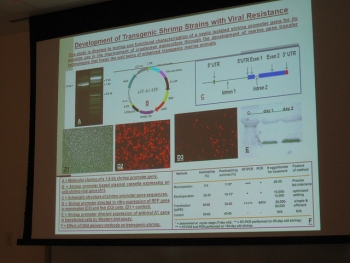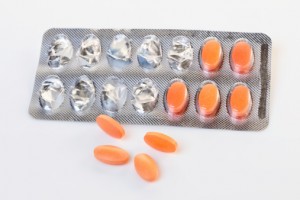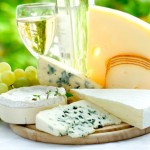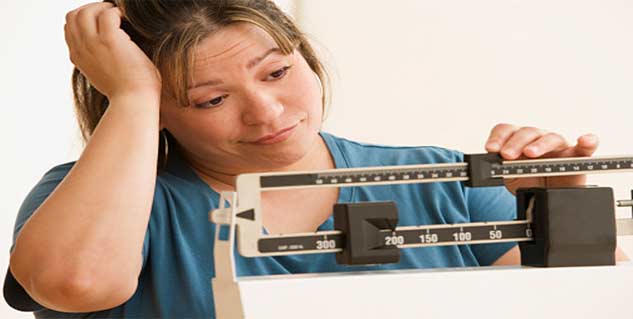Definition: Daily Calorie Intake
Food energy is the amount of energy in food that is available through digestion. The values for food energy are expressed in kilocalories (kcal) and kilojoules (kJ).
One food Calorie (1 kcal or 1,000 calories) is the amount of digestively available food energy (heat) that will raise the temperature of one kilogram of water one degree Celsius. Some advocate the convention of the capitalizing the C in these so that one Calorie is equal to 1000 lowercase calories, but that convention is not generally followed. The large Calorie is sometimes abbreviated kcal, to indicate clearly that is 1000 times as large as the small calorie formerly common in chemistry and physics usage. Consequently, the prefix kilo- is not used with large Calories. Food calories are also more specifically called kilocalories on the basis of the small calorie usage. This term, which makes it clear that large calories are intended, is widely used by professional nutritionists when speaking in terms of calories rather than joules, but the term kilocalorie for the large calorie is less often used by laypersons.
The International System of Units unit kilojoule (kJ) is becoming more common. In some countries (Australia, for example) only the kilojoule is normally used. Some types of food contain more food energy per gram than others: fats and ethanol have particularly high values for food energy density: 9 and 7 kcal/g, respectively. Sugars and proteins have about 4 kcal/g. One (small) calorie is approximately equal to 4.1868 joules. One kcal is 4.1868 kJ.
Each food item has a specific metabolizable energy intake (MEI). For a normal human this value is obtained by multiplying the number of kilocalories or kilojoules contained in a food item by 85%, which is the amount of energy actually obtained by a human after the digestive processes have been completed.
Nutrition and food labels
The "calorie" has become a common household term because dietitians recommend in cases of obesity to reduce body weight by increasing exercise (energy expenditure) and reducing energy intake. Many governments require food manufacturers to label the energy content of their products, to help consumers control their energy intake. In Europe, manufacturers of prepackaged food must label the nutritional energy of their products in both kilocalories ("kcal") and kilojoules ("kJ"). In the United States, the equivalent mandatory labels display only "calories" , often as a substitute for the name of the quantity being measured, food energy; an additional kilojoules figure is optional and is rarely used. The energy content of food is usually given on labels for 100 g and/or for what the manufacturer claims is a typical serving size.
The amount of food energy in a particular food could be measured by completely burning the dried food in a bomb calorimeter, a method known as direct calorimetry.[1] However, the values given on food labels are not determined this way, because it overestimates the amount of energy that the human digestive system can extract, by also burning dietary fiber. Moreover, not all food energy eaten is actually resorbed by the body (fecal and urinal losses). Instead, standardized chemical tests and an analysis of the recipe are used to estimate the product's digestible constituents (protein, carbohydrate, fat, etc.).
Energy usage in the human body
Energy intake to the body that is not used up is mostly stored as fat in the fat tissue. Consider the following theoretical calculation: About 3,500 kcal are contained in 1 pound of fat. If you eat 3,500 kcal more than your body needs, you will put on about 1 pound of fat. If you burn 3,500 kcal more than you eat, you will lose about 1 pound of fat. This assumes that all the weight gained and lost is in the form of fat. In reality, muscle and organ mass will change as well. However, this calculation is somewhat theoretical, as the exact increase in fat tissue also depends on the form of energy intake. For example, food consisting mainly of fat can be converted into fat tissue quite efficiently, whereas carbohydrates cannot.
Similarly, the exact conversion efficiency of food energy into physical power also depends on the exact form of energy source (type of food) and on the type of physical energy usage (e.g. which muscles are used, whether the muscle is used aerobically or anaerobically). In general, the efficiency of muscles is rather low, and roughly speaking, only about 15% of the food energy is actually converted into mechanical energy. For example, gym equipment manufacturers multiply the value of physical power (e.g. 150 watts on an exercise bike) by a factor of 8 when converting into "calories" (by which they mean large calories of food energy, e.g. 17 kcal/min which is 150 W × 8 = 1200 W). This is rather good news for food energy–aware sportsmen, as they can eat 8 times as much food energy as they have to work out in the gym.
Wikipedia, the free enclyclopedia © 2001-2008 Wikipedia Contributors
This article is licensed under the GNU Free Documentation License
-
An Adsense - Yahoo Publisher Network Comparison
As more and more people are hosting their own webpage or pages, ad
-
Lose Weight Now - Time Tested Methods For A lasting Solution
If you happen to be confused like I was,
-
Thank Your Stars and Lose Fat Quickly
The body is capable of showing clues to
-
Understanding Over-weight - How to Successfully Get slim
THE CAUSES OF EXCESSIVE WEIGHT If you e
-
8 Spiritual Principles for Christian Weight Loss
Sometimes, goal setting and striving to
-
How To Reduce Belly Fat Without Extreme Diet
How to Reduce Belly Fat without extreme Diet? There is no point in exe
- DON'T MISS
- Fast Weight Loss – Can I Change Your Mind ?
- Need Inspiration? Try Out These Weight Loss Ideas.
- Weight Loss Clinics In Your Area
- Number One Reason Why You Cannot Lose Weight
- Diet Pill That Works - Tips In Finding The Right Diet Pills That Work For You
- New Years Fitness Resolutions Why Do You Set Them Part 3
- Online Weight Loss Tips That Work Marvels
- Weight Loss Affirmations Equals Success
- Your Personal Weight Loss Plan - Observation
- A Weightloss Diet That




